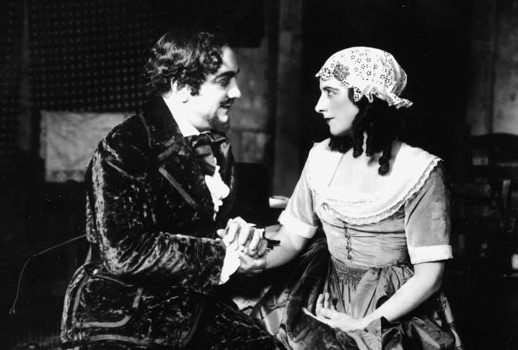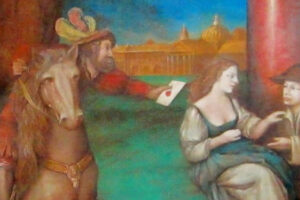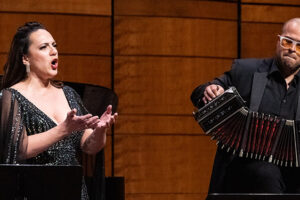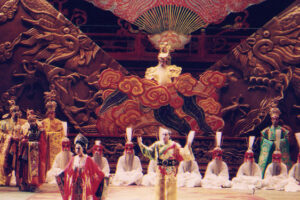

Pitts Sanborn in the World
Seldom, indeed has the nameless and unsuspected malady that claims so many a hapless lady of the lyric stage seemed more gratuitous in its attack than in the case of Lodoletta. Surely it was quite enough for the good, old foster-father to suffer a fatal fall from a peach tree in Act I, while showering the rosy blooms on little children rejoicing over Lodoletta’s birthday, and then for the good wives of the village to drive the children from an innocent young girl in Act II because of an intrigue with a painter which never occurred, without handling her this sorry New Year’s blow in gay Paris. Really, that is just a bit too much! Mimi, Cio-Cio-San, Violetta, Gilda – none of that unhappy sisterhood but has her interlude of heaven. Even Lucia of Lammermoor, hounded relentlessly by the librettist, is allowed by the composer to lead the best sextet in opera and given a form of madness that brings the public up to her knees before she is at last consigned to the Ashton family tomb.
No, it really is quite too sad a good tale of Lodoletta, but so perhaps not quite so sad as Mascagni’s music for it. That is all hovering on the teary smile of La Bohème, then suddenly remembering itself, and resolutely ascowl whining a dour plaint into Othello’s fateful handkerchief, Mascagni seems to have made up his mind on no account to rewrite Cavalleria Rusticana only to lose himself hopelessly in a maze of treacherous Puccini shallows flanked by frowning cliffs of Verdi.
However, the music of Lodoletta is not pretentious, and that is perhaps the kindest thing that can be said about it. The first act, with its genuine simplicity, its pretty song for the caroling children, its soaring tenor phrases, would probably, despite the insistence on Antonio’s funeral march, seem to an opera customer not gorged with frequency to be very nice indeed. The same customer might find that second act a trifle tedious, but the third he would be sure to enjoy.
Theatrically the third is the best act of the work. The orchestra waits for Flammen’s silhouetted guests, the festive music from the street, and set off against these, the pathetic monologues for tenor and for soprano make this an effective opera act even if wanting in originality or special ingenuity. It is on this act that must hang the main success of the work, together with the fact that the rôle of Flammen is so divined that Mr. Caruso can sing it with complete ease and decidedly thrilling results.
He lived up to his opportunity on Saturday in a way that won him deafening applause from an audience which packed the house to bursting. He also looked so slender and played so naturally as the great painter from Paris that one saw in him a perfectly presentable Julien, if the Metropolitan ever gets around to producing that far worthier opera of love and painting, Louise.
The ingenious Lodoletta gives Miss Farrar one of the parts in which she can look and act unsurpassably, recalling by more tokens than a death in the snow the Goose Girl with which she used to beguile the drab boredom of Königskinder. Only her very Chinese pedestrianism of the wooden shoes marred an exquisite impersonation. The high notes of the part which are not few, she sang with more substantial and better focused tone, than has been her wont. Lower down her voice often sounded weak and reedy. Still in phrasing and expression her singing was generally commendable. An admirer balked the no-flowers rule by throwing her a bouquet from a box.
























Comments